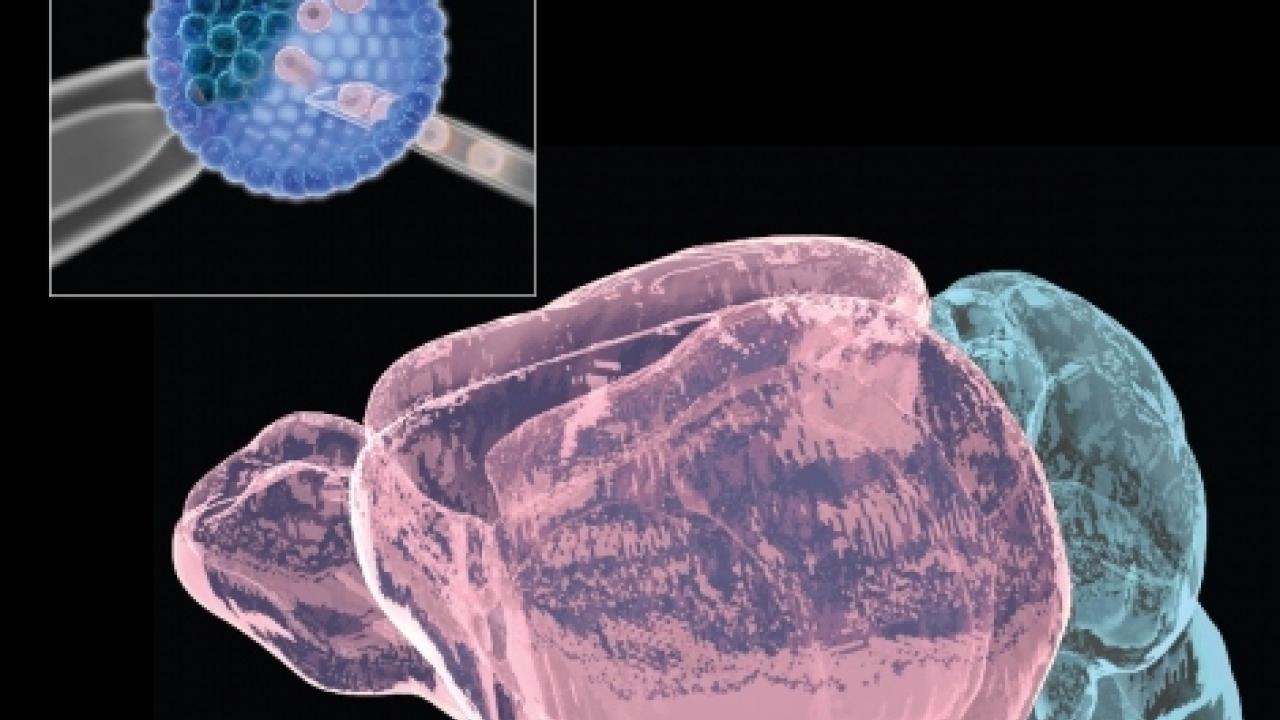
Researchers have devised a new method to inject stem cells into a hollowed-out region of the developing mouse brain (inset) to produce animals with "chimera" brains with cells derived from two genetically distinct mouse strains (pink and blue brain regions). Illustration by Kenneth Xavier Probst, UCSF.
Scientists at UCSF and Boston Children’s Hospital have developed a new technique for making mice with brains that combine the genetics of two different mouse strains.
The authors aim to use this technique to learn more about how brain cancers form, about how genetic alterations in different parts of the brain impact diseases such as autism or schizophrenia. They developed a new and improved mouse “chimera” by clearing out a space in the developing brains of early-stage mouse embryos, enabling cells derived from other mice to grew there instead.
To scientists who study how mammals develop through embryogenesis and beyond, a chimera is a genetically retooled mouse combining cells from different mice. Chimeras are used to sort out key questions about how organs emerge and function over time and how genes behave differently in different parts of an animal.
In the brain, for instance, researchers might want to ask whether a specific gene variant that has been linked to schizophrenia plays different roles in “executive” regions of the brain’s prefrontal cortex versus deeper, more primal brain regions. However, with conventional methods many complex steps, including mouse breeding, are required to get answers about how specific genes and the proteins act in different parts of the brain.
The researchers, led by Bjoern Schwer, MD, PhD, assistant professor of neurological surgery at UCSF, and Fred Alt, PhD, who directs the Program in Cellular and Molecular Medicine at Boston Children’s, developed a new mouse strain in which cells that form key brain structure were programmed to poison themselves with a bacterial toxin during the earliest stages of brain development. The death of these cells left space for injected embryonic stem cells from another mouse to regrow the missing brain structures, resulting in a mouse in which different parts of the brain can have totally distinct genetics.

Schwer and Alt, who are co-senior authors of an October 10, 2018 Nature paper published detailing the new technique, believe their new technique will speed new discoveries to help understand human brain maladies.